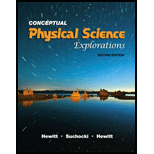
The chemical compound lysine is shown below. What functional group must be removed in order to produce cadaverine, as shown in figure 22.11?

The group to be removed from Lysine to form Cadaverine.
Answer to Problem 18TE
When we remove the carboxylic acid from Lysine, Cadaverine is formed. The removal of carboxylic group is known as decarboxylation.

Explanation of Solution
Decarboxylation is reaction in which removal of carboxyl group takes place in form of carbon dioxide. This reaction is used to remove a carbon atom from organic compound having a functional group. Lysine contains carboxylic group which has to be removed to form cadaverine This takes by simply heating the lysine molecule so carboxylic group leaves as carbon dioxide Cadaverine is a diamine named as 1,5-pentanediamine and pentamethylenediamine. The structure of Cadaverine is given below-

Conclusion:
Therefore, after the removal of the carbon dioxide form Lysine, Cadaverine is formed.

Chapter 22 Solutions
Conceptual Physical Science Explorations
Additional Science Textbook Solutions
Life in the Universe (4th Edition)
Conceptual Physics (12th Edition)
University Physics with Modern Physics (14th Edition)
Essential University Physics (3rd Edition)
University Physics Volume 1
Applied Physics (11th Edition)
 College PhysicsPhysicsISBN:9781305952300Author:Raymond A. Serway, Chris VuillePublisher:Cengage Learning
College PhysicsPhysicsISBN:9781305952300Author:Raymond A. Serway, Chris VuillePublisher:Cengage Learning University Physics (14th Edition)PhysicsISBN:9780133969290Author:Hugh D. Young, Roger A. FreedmanPublisher:PEARSON
University Physics (14th Edition)PhysicsISBN:9780133969290Author:Hugh D. Young, Roger A. FreedmanPublisher:PEARSON Introduction To Quantum MechanicsPhysicsISBN:9781107189638Author:Griffiths, David J., Schroeter, Darrell F.Publisher:Cambridge University Press
Introduction To Quantum MechanicsPhysicsISBN:9781107189638Author:Griffiths, David J., Schroeter, Darrell F.Publisher:Cambridge University Press Physics for Scientists and EngineersPhysicsISBN:9781337553278Author:Raymond A. Serway, John W. JewettPublisher:Cengage Learning
Physics for Scientists and EngineersPhysicsISBN:9781337553278Author:Raymond A. Serway, John W. JewettPublisher:Cengage Learning Lecture- Tutorials for Introductory AstronomyPhysicsISBN:9780321820464Author:Edward E. Prather, Tim P. Slater, Jeff P. Adams, Gina BrissendenPublisher:Addison-Wesley
Lecture- Tutorials for Introductory AstronomyPhysicsISBN:9780321820464Author:Edward E. Prather, Tim P. Slater, Jeff P. Adams, Gina BrissendenPublisher:Addison-Wesley College Physics: A Strategic Approach (4th Editio...PhysicsISBN:9780134609034Author:Randall D. Knight (Professor Emeritus), Brian Jones, Stuart FieldPublisher:PEARSON
College Physics: A Strategic Approach (4th Editio...PhysicsISBN:9780134609034Author:Randall D. Knight (Professor Emeritus), Brian Jones, Stuart FieldPublisher:PEARSON





